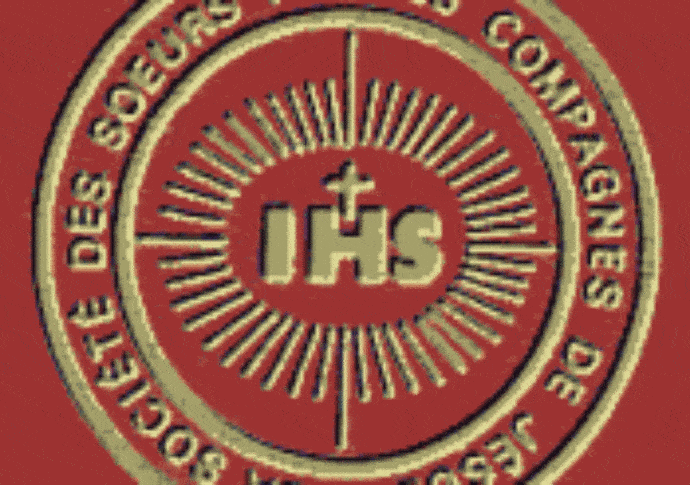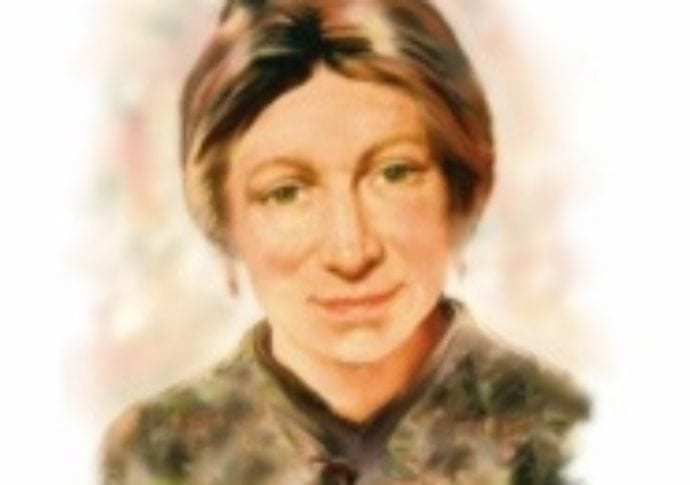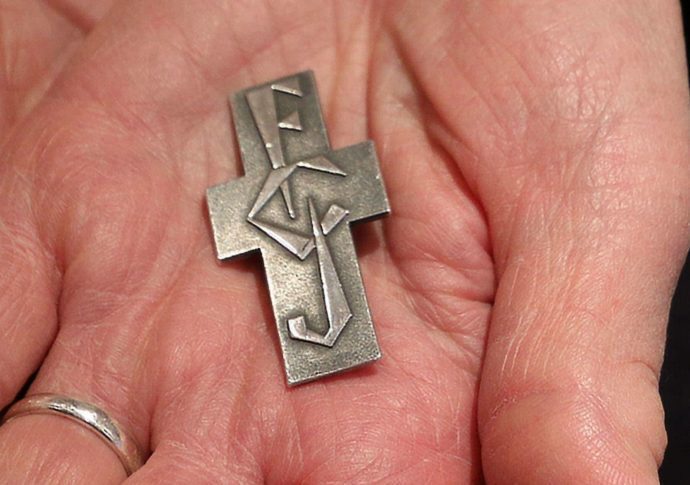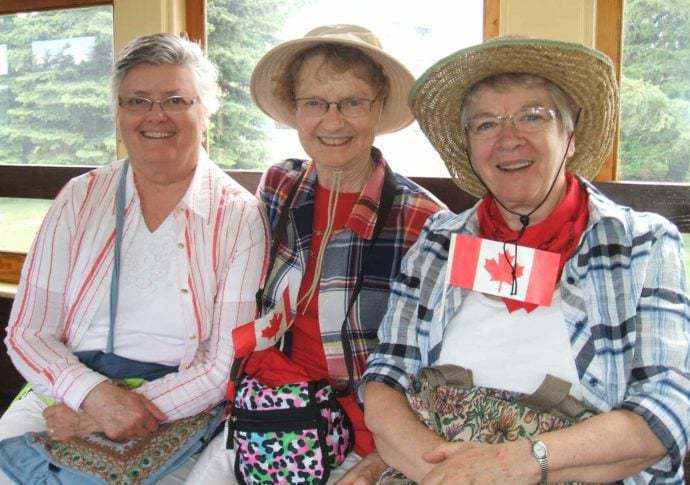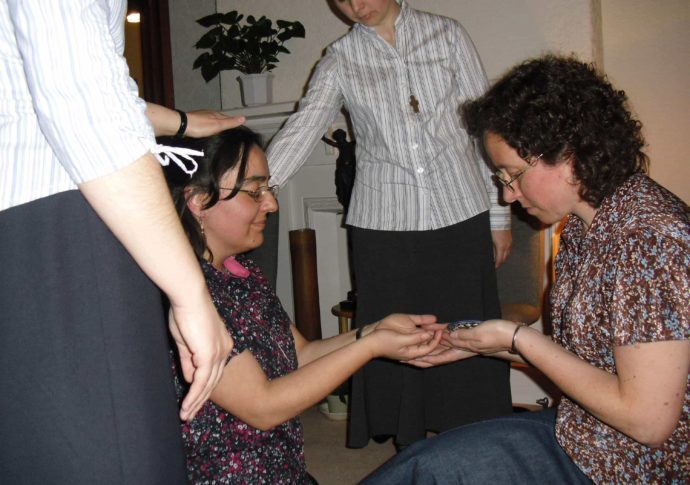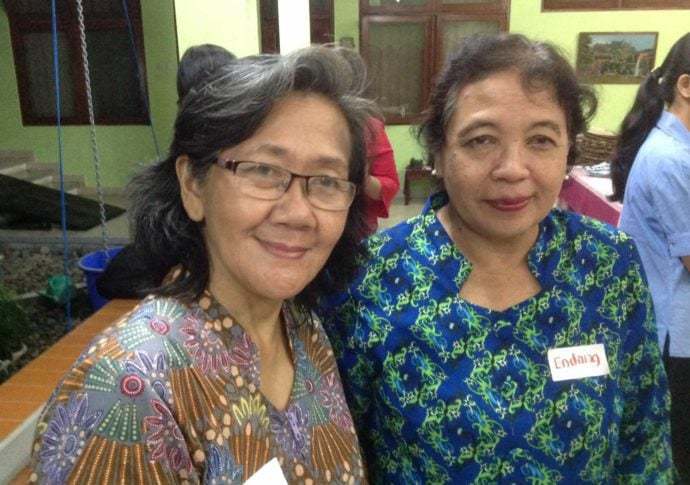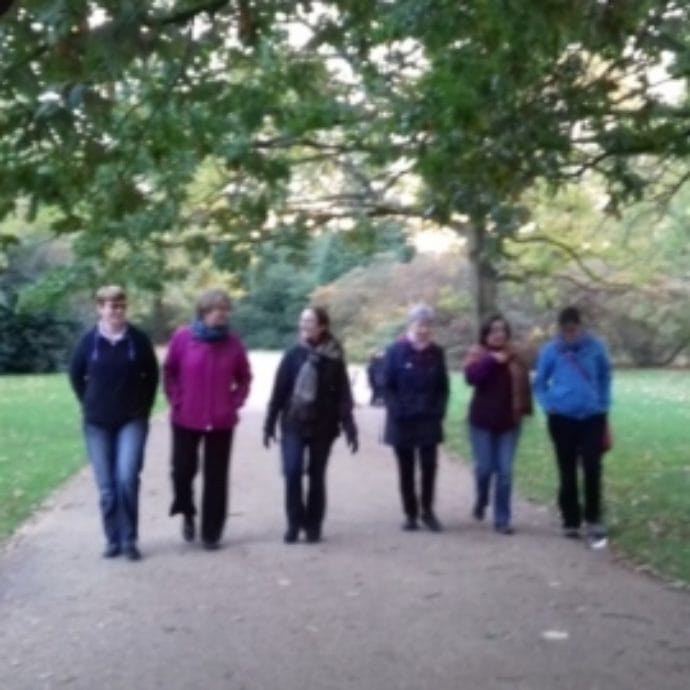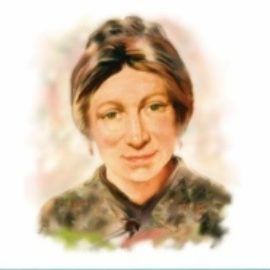History of the Faithful Companions of Jesus in Ireland

History of the Faithful Companions of Jesus in Ireland
History of the FCJ Society in Ireland
The Faithful Companions of Jesus came to Ireland in 1842. Marie Madeleine d’Houët, the foundress of the FCJ Society, had already established two schools in London when Dr Kirwan, the parish priest of Oughterarde went to there appealing for funds to refurbish his church and presbytery. He called at Somers Town and Gumley. There he saw the Faithful Companions at work and decided that he must persuade them to come to Ireland.
When Marie Madeleine heard the news of his proposal, she is said to have been filled with joy. She had long felt drawn to the land that had suffered for centuries because of its fidelity to the faith and that had looked to France for aid during its time of affliction (Grogan p. 181). You know well, she wrote, that I am Irish at heart.
She sent Mother Julie Guillemet to examine the possibility of a foundation and by 1844 a novitiate and a school had been established at Oughterarde. The Faithful Companions received a warm welcome from Dr Kirwan, from the bishop of Galway and from the local people. The school was very successful and already by the summer of 1844 it had enrolled 300 pupils. However, it very soon became clear to Marie Madeleine that Oughterarde, which was fifteen miles west of Galway was too remote and too much off the beaten track to fulfil her expectations.. For the expansion of her society in Ireland and for the recruitment of subjects, she needed to be in a more central location. She regretted having to give up the work in Oughterarde that was so dear to her and it was with great sadness that the sisters left Oughterarde in 1844.

Laurel Hill, Limerick 1844 –

When the administrator of St John’s Parish invited her to make a foundation in Limerick Marie saw this as providential. There would be two schools, a day school and a boarding school. These would cater for the needs of the children of well-to-do parents who up to this time sent their children to England to be educated. The poor of the city were already well catered for by the Sisters of Mercy and the Presentation sisters. Madame d’Houët came to Limerick herself to see to every detail regarding the foundation.

The day school was opened at No. 1. The Crescent on 24th February 1845 with 33 pupils. By the summer of the same year the beautiful property of Laurel Hill had been purchased and a boarding school was opened there on 26th June 1845 with 11 pupils. So obvious was the need for more space that a major extension to the original building was planned. This was opened in 1846 and according to the Annals, ‘people flocked in from the city and from all parts of Ireland to admire its noble proportions’.
The school prospered, pupil numbers increased and the foundation had the warm support of the clergy and bishop of the diocese. All augured well for the future but then in the years 1847 to 1848 came the awful ravages of the Irish famine. Whole families were dying from hunger and disease, food was costly and scarce and at Laurel Hill numbers in the boarding school had dwindled to 11 pupils. Marie Madeleine had decided that unless the situation improved the house would be closed within two months. Meanwhile the sisters prayed for guidance and devoted their time to caring for the many hungry people who came to the convent doors. Happily, within weeks the pupil numbers had risen again to thirty six and the future of the school was assured.
In the ensuing years the school continued to be a successful. Numerous building programmes were undertaken to cater for the steadily increasing numbers. The school became renowned not only for its academic achievements but also for the school choirs and high standards in music, needlework and art.

The Irish Free State was inaugurated in 1922 and by the 1930s the Irish government had begun to promote education through Irish in all areas outside the Gaeltacht (the Gaelic speaking areas). In 1935 the FCJ sisters accepted the invitation to engage in a significant educational initiative and an ‘A’ school (now called the Colaiste), was opened.
In 1986 the boarding school was closed and extensive renovations were undertaken to modernise the facilities and make room for increased numbers. Now, two outstanding schools operate on the Laurel Hill campus, one teaching through the medium of Irish, Laurel Hill Coláiste FCJ, and the other through the medium of English, Laurel Hill Secondary School FCJ. In the rapidly changing world of education Laurel Hill remains one of the finest of its kind in Ireland.
Bruff, Co Limerick 1856 –

St Mary’s Convent, Bruff holds the proud distinction of being the last foundation made by Marie Madeleine d’Houët. The parish priest of Bruff, Dean Cussen, had met her when he was a student at Saint Sulpice in Paris. In 1856 he applied directly to Marie Madeleine asking her to send sisters to look after schools in his parish. He could offer no convent at first, only the shelter of his mother’s home. Marie Madeleine gladly accepted this offer and her nuns rented accommodation with Mrs. Cussen in a moderate sized house in Crawford’s Lane, where the school began with 25 boarders. Seeing the prospect of a thriving boarding school, Dean Cussen purchased the land on which the first convent block and the schools, both primary and secondary, were built. The site was just below the town on the left bank of the Morning Star River, a site that later made possible the creation of beautifully landscaped grounds and the enhancement of the life of the school.

Gradually, over the years, the school grew into a beautiful complex of harmonious building and landscaped garden. Over the years alterations were needed to meet with the demands of the Department of Education and the increased number of students. Although day pupils had been accepted since 1896, it was not until the introduction of free secondary education in Ireland in 1967 that the number of day students increased noticeably. In 1969, responding to local needs, the school became co-educational a move that was much appreciated by local parents. The boarding school closed in 2001 and in the following year the first lay principal was appointed. By 2009 it became clear that the FCJs could no longer keep on the trusteeship of the school and, in the absence of alternate trustees, it was decided that the School would close in 2012 after 156 years of involvement in education in Bruff Parish.
Bunclody, County Wexford 1861 –
After the famine years there was great poverty all over Ireland. Children and young people were in great need of basic education. Father Parle, the curate in Bunclody (a town known at the time as Newtownbarry) was determined to improve the educational opportunities in his parish. This priest, who is thought to have met the FCJs when he was a student at Saint Sulpice in Paris approached the FCJ Superior General with a request that she send sisters to found a school in his parish. Having agreed to his request, the superior General Mother Josephine Petit and the Assistant General, Mother Marie de Bussy arrived on 5th August 1861 to complete the negotiations. Father Parle’s house adjacent to the Church was refurbished and an annex added to form the first community house for the five sisters who immediately took over the running of the girls’ primary school.
The sisters wasted no time in making preparations for the foundation of a boarding school for the education of older students. Within five days of their arrival in Bunclody The People newspaper carried an advertisement announcing the opening of a boarding school for girls. The school thrived from the beginning and it seems that a significant number of Church of Ireland students attended the day school from the start. As a result the school’s relations with the local Church of Ireland have always been very harmonious.

Over the years the school expanded and earned a strong reputation for high academic standards. By the 1960s change was in the air: in 1967 secondary education became free for all students, there was a dramatic expansion in numbers and new buildings were added. In 1969 boys were admitted for the first time and the school became co-educational. FCJ Secondary School maintains its excellent academic standards and draws students from a 20 mile radius of Bunclody.
 Kenilworth Square, Rathgar, Dublin 1922 – 1999
Kenilworth Square, Rathgar, Dublin 1922 – 1999
This was opened in 1922 as a house of studies for those attending University or other courses in Dublin. Many Irish FCJs and some from other countries have passed through its portals over the years.
The spirituality of the Sisters Faithful Companions of Jesus is Ignatian, and the ministries undertaken by sisters always take into account the current needs of the church and the world. During the nineteenth century and for much of the twentieth century one of the greatest needs was the provision of education. Since the 1960s change has been more rapid that at any other time in history. There is now well educated catholic laity and free state-funded education. In addition, there has been the challenge of Vatican II to renewal of life in the church. For the FCJ sisters it is now possible to be open to a far wider range of ministries – any ministry that is for the greater glory of God.
New ministries often require the establishment of smaller communities and a number if these have been opened in Ireland since 1987:
1987 Cherrywood (Clondalkin, Dublin) – residence opened for a small community of sisters involved in the local parish and school.
1990 Wedgewood (Sandyford, Dublin) – residence opened for a small community of sisters involved in the local parish and schools.
1991 Gouldavoher (Limerick) – residence opened for a small community of sisters involved in local parish ministry and in the Laurel Hill schools.
1995 Westbourne (Clondalkin, Dublin) – residence opened for a small community of sisters involved in local parish ministry, in the local school and in diocesan work.
1998 Laurel Hill Court (Limerick) – residence opened for a small community of sisters involved in the Laurel Hill Schools, in parish ministry, and in literacy and refugee projects in Limerick.
1999 Kenilworth Square closed and FCJ Provincial House relocated to Kimmage, Dublin.
1999 Ballycragh (Tallaght, Dublin) – residence opened for FCJ sisters involved in parish and other ministries.
2002 Ballygrennan (Bruff, Co. Limerick) – residence opened for the sisters who had been living on the school campus.
2009 The residences of Cherrywood and Clondalkin were closed.
Beyond the Emerald Isle
Marie Madeleine had a strong sense of mission. Since 1842, when the sisters first came to Ireland, the schools founded by the Society have been in the forefront of Catholic Education. In that period too, hundreds of young Irish FCJs have been sent on mission to the four corners of the world. From the beginning to the present day, wherever the FCJ Society has put down its roots – Britain, continental Europe, Canada, the United States, Australia, South America, the Philippines, Indonesia, Burma (Myanmar) or the Sudan, there are Irish FCJs to be found. The story of Irish Faithful Companions of Jesus reaches far far beyond the Emerald Isle.



